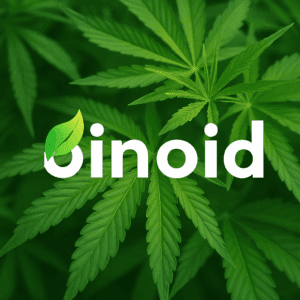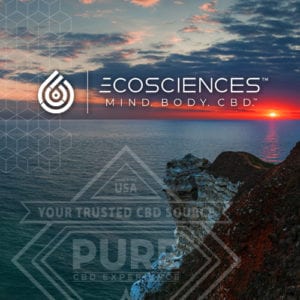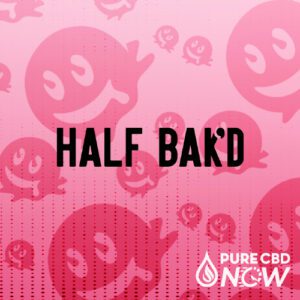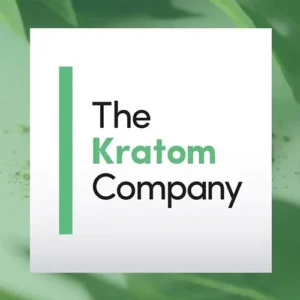Ever wondered what makes kratom tick? How this Southeast Asian plant, a relative of the coffee family, affects your body and mind? Well, it’s all in the receptors. Kratom’s magic lies in its ability to interact with certain receptors in your body, leading to various effects.
Key Takeaways
- Kratom is a Southeast Asian plant used for centuries as traditional medicine; it contains two primary active compounds, mitragynine and 7-hydroxymitragynine, which interact with the body’s opioid receptors.
- Various effects of Kratom can be experienced, from alertness to pain relief, depending on the dosage consumed.
- Kratom’s key compounds target μ-opioid receptors, which results in effects similar to endorphins and opioid-based medications but without severe respiratory depression often associated with conventional opioids.
- Besides opioid receptors, Kratom interacts with dopamine and serotonin systems, potentially offering benefits for mood regulation, depression, and anxiety. It also affects adrenergic and GABAergic receptors, offering stimulant effects at lower doses.
- Despite holding potential therapeutic benefits, there are risks and side effects of using Kratom, including dependence risk, nausea, elevated heart rate, and blood pressure.
- The legal status of Kratom varies significantly across the globe; in the United States, it’s considered legal but regulated in some states, while banned in others. Other countries impose strict regulations, yet the stance on Kratom differs widely. It’s crucial to be aware of the legal implications in one’s region.
Overview of Kratom and Its Effects
Understanding Kratom entails digging into its history, examining its active compounds, and identifying the receptors it works on inside the body.
Brief History of Kratom Use
Kratom’s use traces back to several centuries ago, primarily in Southeast Asia. Originally employed as a traditional medicine, folks chewed Kratom leaves to alleviate pain, enhance mood, and boost productivity.
Understanding Kratom’s Active Compounds
The primary active compounds present in kratom leaves are mitragynine and 7-hydroxymitragynine. Together, they interact with the body’s opioid receptors, producing effects akin to both stimulants and depressants. In smaller doses, mitragynine triggers alertness, offering a similar reaction to amphetamines. In higher doses, it acts more like an opioid – relieving pain, instigating euphoria, and funcilitating an overall calming effect.
What makes Kratom unique is its ability to procure different impacts at different dosage levels, thanks to these active compounds. It’s important to mention that the concentration of these active compounds can vary, depending on the type, age, and origin of the Kratom plant. For instance, there’s a product known as 7-Hydroxymitragynine that boasts a higher concentration of that specific compound.
Be sure to delve into the science behind Kratom and understand how it interacts with your body before venturing onto a potential path involving this natural substance. For comprehensive information and user-friendly shopping, consider visiting sites like PureCBDNow for all your Kratom needs.
What Receptors Does Kratom Work On?
Understanding the specific receptors kratom affects is pivotal in comprehending its potential benefits and risks.
Interaction with Opioid Receptors
Kratom’s key compounds, mitragynine and 7-hydroxymitragynine, target the μ-opioid receptors in your brain. They act on these receptors, similar to endorphins and medications like morphine. However, kratom doesn’t induce the severe respiratory depression often seen with conventional opioids (source: Journal of the American Osteopathic Association, 2017). Thus, the chance for overdoses lessens, though the risk for dependence still exists.
Influence on Dopamine and Serotonin Systems
In addition to opioid receptors, kratom interacts with dopamine and serotonin systems. Dopamine, commonly associated with pleasure and reward, gets a boost from kratom use. Serotonin, linked to mood regulation, can also increase. Research studies flip the role of kratom from a painkiller to a potential antidepressant or anti-anxiety treatment due to these interactions (source: Frontiers in Psychiatry, 2019).
Effects on Adrenergic and GABAergic Receptors
Kratom does not limit itself to opioid, dopamine, and serotonin receptors. It also impacts adrenergic and GABAergic receptors. Interaction with adrenergic receptors stimulates energy and alertness, explaining the stimulant effects at lower doses. However, kratom’s interaction with GABAergic receptors, which typically suppress nervous system activity, isn’t completely understood yet and warrants further research.
Investigation indicates that kratom might offer therapeutic potential in the treatment of pain, mood disorders, and addiction (source: Drug and Alcohol Dependence, 2016). Yet, one must proceed with equitable caution due to the potential for misuse and dependency. It’s not a one-cap-fits-all solution, and individual responses can differ greatly. Brains are unique, after all.
For further exploration of kratom and its key compound 7-Hydroxymitragynine, consider checking out PureCBDNow. They offer extensive resources for those interested in further understanding the potential of kratom.
Health Implications of Kratom Interactions
Diving deeper into the world of kratom, the health implications of its interactions arise from its effect on various receptors. Kratom’s diverse interactions can lead to potential therapeutic benefits. However, it’s essential not to overlook the risks and side effects associated.
Potential Therapeutic Benefits
Kratom majorly interacts with the body’s opioid receptors. Consequently, it can alleviate chronic pain. Its interaction with dopamine receptors implies potential benefits in mood regulation. It’s interaction with serotonin receptors suggests uses in alleviating symptoms of depression and anxiety.
Consider its effect on adrenergic receptors, studies indicate potential positive effects on focus and energy. Moreover, its impact on GABAergic receptors could lead to reduced symptoms of anxiety, again demonstrating kratom’s multifaceted benefits.
Risks and Side Effects
Despite the potential therapeutic benefits, kratom may invite a host of risks and side effects. First, due to its effect on opioid receptors, it carries a risk of dependence, especially when consumed excessively. Nausea, constipation, loss of appetite, and seizures also occur as side effects.
Moreover, its impact on adrenergic receptors can lead to elevated heart rate and blood pressure. As such, it would be best if you considered these risks before deciding to incorporate kratom into your health routine.
Regulatory and Legal Status of Kratom
Having explored the complex interactions of kratom with various receptors, we now delve into the legal landscape surrounding this intriguing plant. Regulatory bodies worldwide have varying perspectives on kratom, largely due to its potential for therapeutic benefits and inherent risks.
Kratom Regulation in the US
In the United States, the legal status of kratom is a patchwork. Controlled substance legislation varies by state. The Drug Enforcement Administration (DEA) discussed the possibility of labeling kratom as a Schedule I drug, similar to cannabis and LSD, in 2016. Public outcry, however, led to a retraction of this proposal.
Today, several states, including Alabama, Arkansas, Indiana, Rhode Island, Vermont, and Wisconsin, ban kratom use. In others, it remains legal but regulated, often with age restrictions. It’s worth noting, the Food and Drug Administration (FDA) does not approve kratom for any medical use.
International Perspectives on Kratom
On an international scale, kratom’s legal status is equally diverse. In its native Southeast Asia, some countries impose strict regulations. For example, Thailand only lifted its 70-year ban on kratom in 2018, and now it’s allowed for medical use only. Malaysia, despite being a major producer of kratom, keeps its use and sale illegal, with severe penalties for non-compliance.
In contrast, European nations’ stance varies. Most have legal restrictions, while some, such as Denmark, Latvia, Lithuania, Poland, and Sweden, categorize it as a controlled substance. The United Kingdom allows possession and sale, but not import for personal use.
Examining the world’s diverse legislations, it’s clear that kratom’s complex bioactivity and potential health implications significantly influence its legal treatment. However, the ultimate decision to use kratom rests in your hands, given its availability from resources like PureCBDNow. For those further interested in its components, you can explore specifics about 7-Hydroxymitragynine. Be aware of its effects and legalities in your region before use, prioritizing informed decisions supporting your health and wellness.
Conclusion
So you’ve learned that kratom has a complex relationship with your body’s receptors, acting as both a stimulant and depressant. Its potential therapeutic benefits for pain, mood disorders, and addiction treatment are compelling. But remember, there are also risks such as dependence and side effects to consider. It’s also crucial to stay informed about the fluid legal landscape surrounding kratom. Regulations vary widely, from potential Schedule I status by the DEA to outright bans in certain states and countries. Despite the FDA’s non-approval for medical use, kratom continues to garner interest and debate. As you navigate the world of kratom, resources like PureCBDNow can be invaluable. Stay informed, stay safe, and always approach kratom with a clear understanding of its effects and legal status.



































